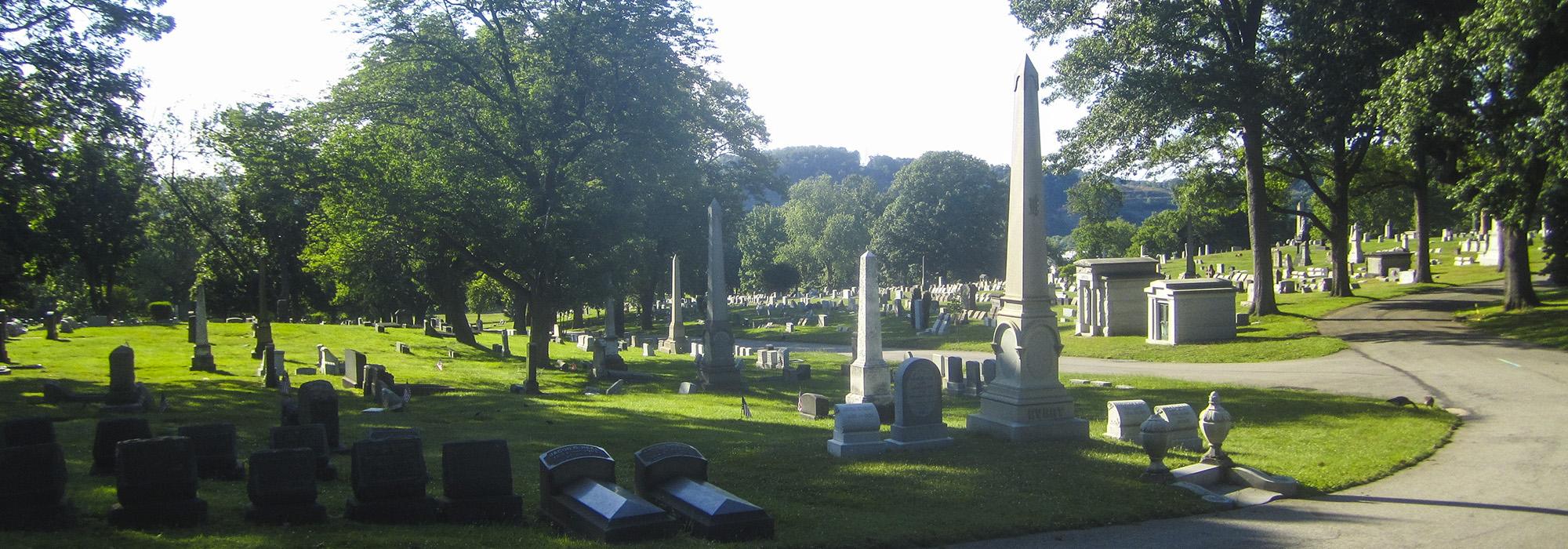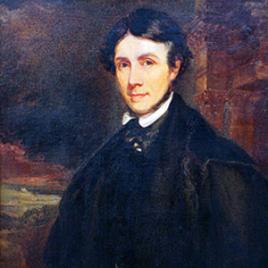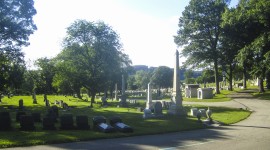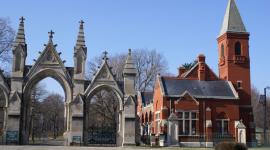Pioneer Information
Born in 1800 in Somerset, England, Chislett was a sculptor, painter, and organist in the U.K. until 1832 when he immigrated with his wife and four children to Pittsburgh, Pennsylvania. From 1833 to 1844 he designed buildings and interiors, including the Greek Revival Allegheny County Courthouse (demolished due to fire in 1882) and the Third Presbyterian Church, often in partnership with marble-cutter and fellow Englishman Edmund Wilkins. He continued to paint during these years.
As the American rural cemetery movement developed in the 1830s, Chislett advocated for and eventually designed Pittsburgh’s Allegheny Cemetery, modeled after Mount Auburn Cemetery in Cambridge, the nation’s first rural cemetery. Chislett completed Allegheny Cemetery in 1844 and served as its superintendent until 1867. During this period, he designed rural cemeteries in Pennsylvania, West Virginia, Indiana, and possibly Ohio. Embodying the Gothic Revival style, Chislett’s designs featured crenellated gatehouses, wrought iron fencing atop stone coping, and grave plots marked by ornate statuary and obelisks. He also incorporated picturesque ponds and water features, sinuous drives and paths, valleys and glades, and naturalistic groupings of trees. Upon his retirement Chislett’s younger son, John Chislett, Jr., succeeded him as superintendent of Allegheny Cemetery, while his older son, Frederick Chislett, served as superintendent of the Chislett-designed Crown Hill Cemetery in Indianapolis, Indiana. Chislett was awarded an honorary M.A. by Washington College in 1847. Blind for his final years, John Chislett, Sr. died in 1869 and was buried at Allegheny Cemetery.








